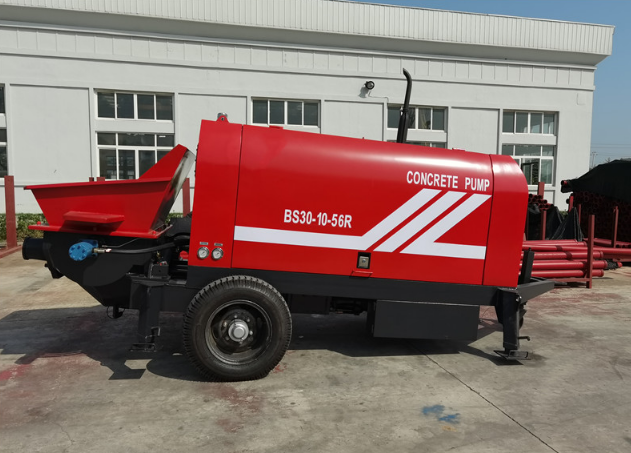Top 5 Advantages of a Concrete Pump
Here are the five greatest benefits of using a concrete pump at your construction site.
1. PUMPS OFFER MORE EFFICIENT CONCRETE POURING
Speed is one of the most significant advantages pumps have over other methods of concrete pouring. Because the piston system works to send a steady flow of concrete through the hose, pouring concrete with a pump truck takes less time and labor than transport methods like wheelbarrows or concrete buggies. In optimal conditions, the whole pour process can take as little as an hour from start to finish.
The accuracy of pumps also saves time. Both boom and line pumps are more precise in pouring than traditional methods because their flexible extensions allow you to place the concrete exactly where you need it. With fewer errors, you’ll be able to produce cleaner work faster and spend less time cleaning up mistakes.
Additionally, by integrating the mixing truck with the pump system, concrete pump trucks save you the time you would have spent waiting for the next concrete batches to be ready.
2. PUMPED CONCRETE IS STRONGER
To effectively pour concrete through a chute, you need wetter concrete. The added water can compromise the strength of the concrete, leading to cracks and shrinkage later on. Ultimately, this means your final product will not be able to withstand as much pressure as it could if you’d used drier concrete.
Pumped concrete contains less water than chute-poured concrete. As a result, it can withstand higher amounts of force than chute-poured concrete and is less susceptible to cracking. Your projects will last longer and will need fewer repairs than if you were to use a more traditional mixer-to-chute method.
3. YOU CAN USE A PUMP ANYWHERE
Concrete pumps can easily fit into any space, whether that be on the ground or in the air. Boom pumps in particular are great for hard-to-reach areas because they can extend over large structures like homes and landscaping.
Concrete pumps are also readily transportable because they’re compact when not in use. Pumps fold in one of three configurations:
Roll-and-fold: The sections of the pump fold one under the next in a curling motion. This configuration requires the most space since it needs room to unfurl.
Z and ZZ: Pump sections fold in a zigzag formation like the bellows of an accordion. This configuration is perfect for fitting into tight spaces.
RZ or multifold: The pump has sections that combine both roll-and-fold and Z-type configurations.
With any configuration, you can move the pump where you need to pour.
4. PUMPS WILL KEEP YOUR PROJECTS MOVING
Setting up concrete pumps is quick and easy, requiring fewer employees and less equipment than other methods. After all, you need people to build a chute before you can even begin pouring. You only need two people to operate a pump — one to watch the hose and another to work the controls. And once they’re ready, concrete pumps have a high capacity per hour.
Concrete pumps are also safe to use even in rough weather or dark conditions. You can finish tasks on days when you previously would have had to take a break. A pump’s durability and consistent flow mean you’ll experience fewer delays in construction and less downtime. The pressurized pouring process is much quicker than chute delivery, which relies on gravity to push the concrete down into the pour site. As a result, you’ll have more time to focus on other aspects of your project.
5. YOUR CONSTRUCTION SITE WILL BE SAFER
Because pumps can extend over large areas, you can keep trucks and other large machinery out of the way of dangerous obstructions. Just park the truck, extend the hose wherever you need the concrete to go and start pouring. The piston-operated system will take care of the rest until your space is filled.
Concrete pumps also require fewer people to operate, reducing site congestion and improving job safety and efficiency.


评论
发表评论